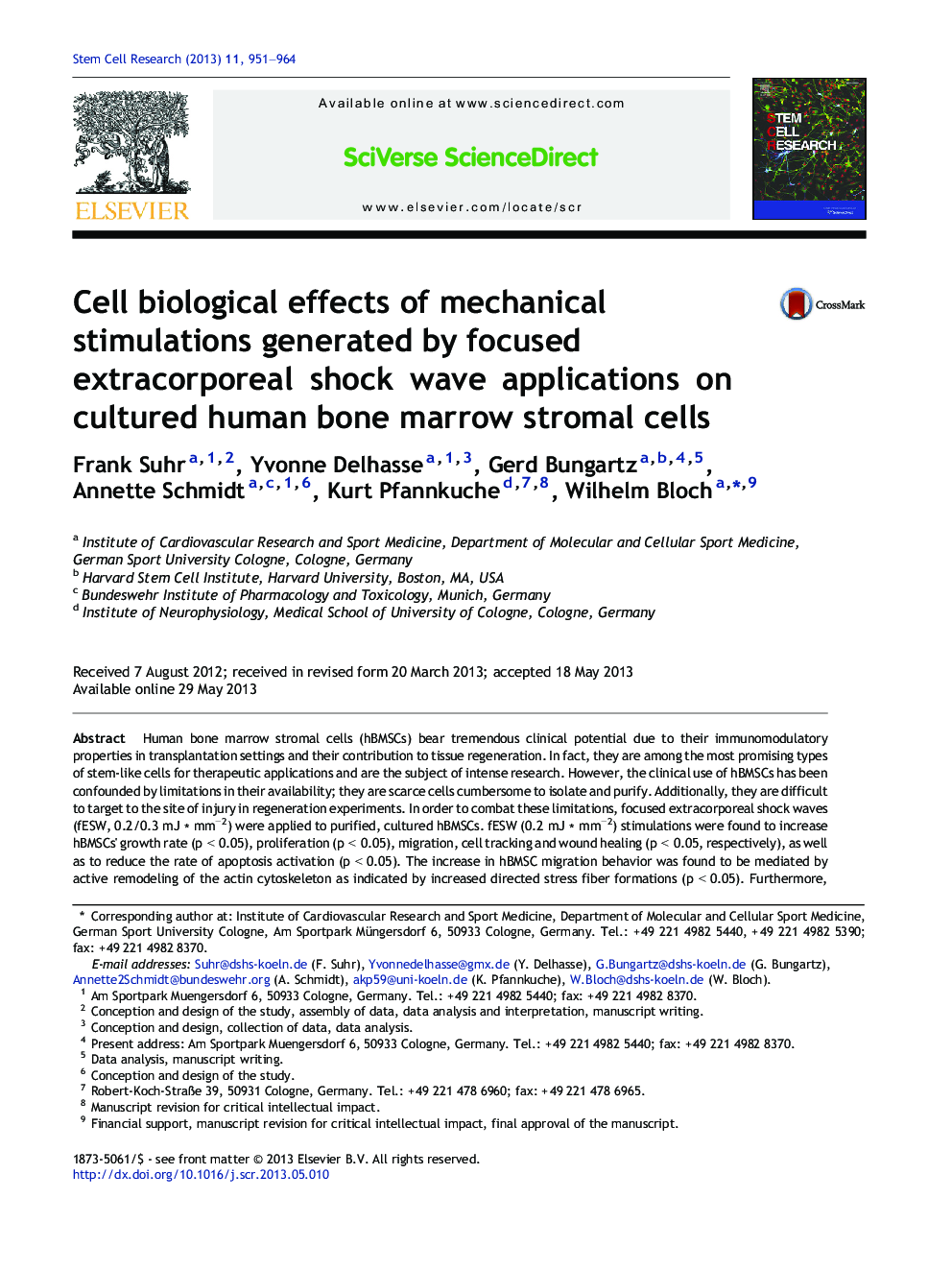| Article ID | Journal | Published Year | Pages | File Type |
|---|---|---|---|---|
| 10891423 | Stem Cell Research | 2013 | 14 Pages |
Abstract
Human bone marrow stromal cells (hBMSCs) bear tremendous clinical potential due to their immunomodulatory properties in transplantation settings and their contribution to tissue regeneration. In fact, they are among the most promising types of stem-like cells for therapeutic applications and are the subject of intense research. However, the clinical use of hBMSCs has been confounded by limitations in their availability; they are scarce cells cumbersome to isolate and purify. Additionally, they are difficult to target to the site of injury in regeneration experiments. In order to combat these limitations, focused extracorporeal shock waves (fESW, 0.2/0.3 mJ â mmâ 2) were applied to purified, cultured hBMSCs. fESW (0.2 mJ â mmâ 2) stimulations were found to increase hBMSCs' growth rate (p < 0.05), proliferation (p < 0.05), migration, cell tracking and wound healing (p < 0.05, respectively), as well as to reduce the rate of apoptosis activation (p < 0.05). The increase in hBMSC migration behavior was found to be mediated by active remodeling of the actin cytoskeleton as indicated by increased directed stress fiber formations (p < 0.05). Furthermore, hBMSCs maintain their differentiation potentials after fESW treatment, whereas 0.2 mJ â mmâ 2 is the most effective application. In conclusion, our results establish first-timely that hBMSCs' behavior can be modified and optimized in response to defined mechanical stimulation. These findings appear particularly promising as they suggest that mechanical stress preconditions hBMSCs for improved therapeutic performance without genetic manipulations and that mechanically preconditioned hBMSCs will be advantageous for hBMSC-based tissue regeneration. Therefore, this approach opens the door for exploiting the full potential of these cells in regenerative medicine.
Related Topics
Life Sciences
Biochemistry, Genetics and Molecular Biology
Biotechnology
Authors
Frank Suhr, Yvonne Delhasse, Gerd Bungartz, Annette Schmidt, Kurt Pfannkuche, Wilhelm Bloch,
